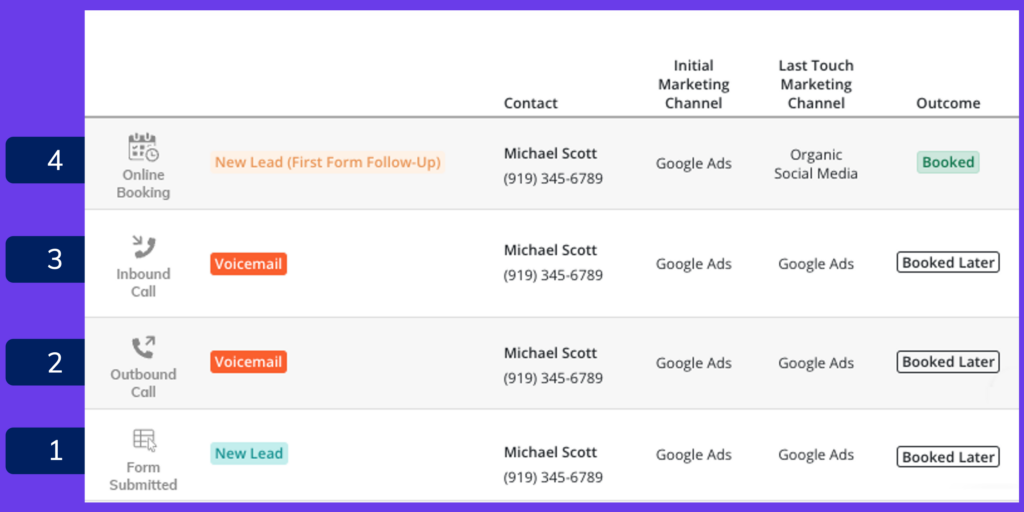Common Lead Tracking Mistakes That Are Costing You Patients: How To Fix Duplicate Leads
In our previous post about healthcare practice lead tracking, we discussed the pitfalls of working with incomplete data. The main takeaway was that practices should track new patient leads from every interaction channel. Otherwise, you’re extrapolating assumptions which are likely incorrect and causing you to make ill-informed decisions.
Even worse than working with incomplete data, however, is working with incorrect data. And this brings us to our next mistake:
Mistake #2: Tracking Interactions Instead Of Unique People
As a growth-focused practice, you need to track your new lead volume in order to make informed decisions and measure performance. Of course you know this, which is why you’ve set up a system to identify which of your inbound phone calls are new patient interactions. Now you just need to tally your new patient phone calls, web forms, chats, and online bookings and voila! You have a system to track your new patient lead volume. Right?
Well, not quite, unfortunately. This process is still excluding one critical step.
What we have described so far is a process that tracks new patient interactions, but NOT new patient leads. That’s because we have skipped the de-duplicating (or de-duping) process. Simply put, your new patients are very often interacting multiple times through multiple channels.
Consider the following real-world example of a patient who 1) submitted a web form, 2) received a callback from the practice, 3) returned the practice’s call, and finally 4) booked an appointment online:

In this scenario, most practices would report three new patient leads. Without unifying these interactions, they would believe they received two new patient leads from Google Ads (converting at 0%), and one from social media (converting at 100%). You can see how quickly our tracking data becomes inaccurate if we are not able to resolve duplicate interactions. And it is incredibly common for patients to have multiple touchpoints.
Solving For Unique New Patient Interactions
If you want to solve this on your own, you will need to establish one database that unifies information from every new patient interaction. You can then tally unique contacts based on unique phone numbers, or decide if you want to merge duplicate contacts with more advanced matching rules.
Here is how you might approach this:
- Create a unified reporting database
- Begin by using phone numbers as your unique matching criteria
- Measure first and last touch attribution, at minimum
- Report unique lead count per marketing channel
- Determine your lead to appointment conversion rate by dividing new patient bookings by the unique lead count.
What's Next?
In our next post, we will discuss web form submission follow-up. If follow-up is done right, a practice will book nearly 3x more new patients. We’ll cover what you should measure and how.
As always, if you’re looking to solve any of these challenges without the hassle of doing it yourself, well, that is exactly why Liine exists! Liine provides unified lead tracking with marketing attribution and more.